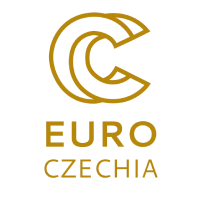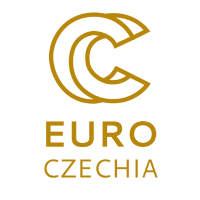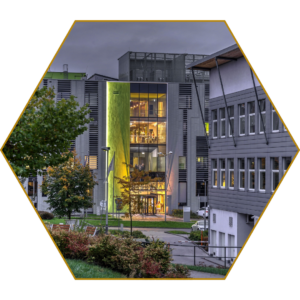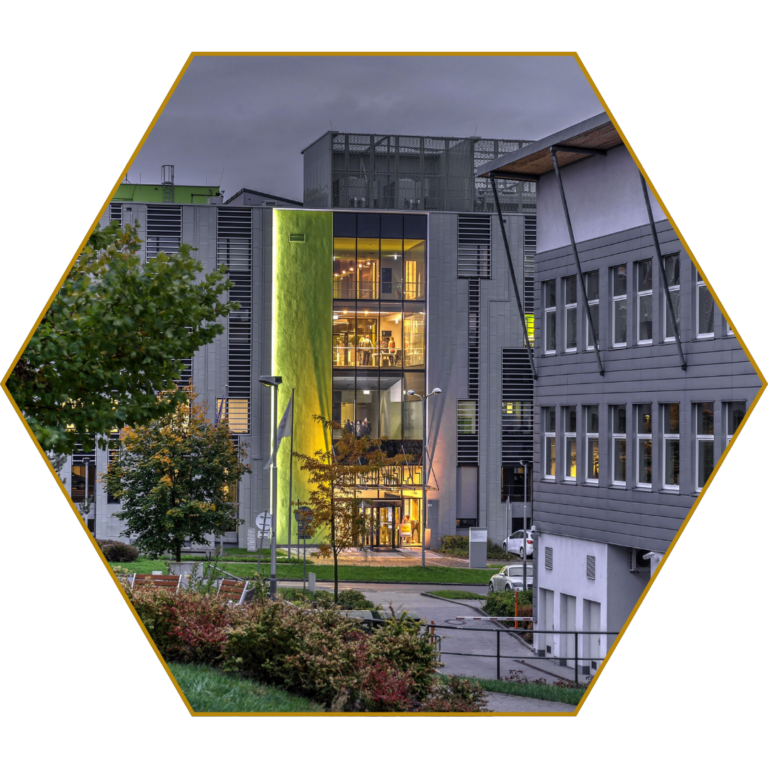Access to supercomputers
We facilitate access to supercomputers and expert know-how for Czech businesses, public institutions and academics.
We are the National Competence Centre in High Performance Computing (HPC).
Access to supercomputers can be divided into two categories:
I. VIA IT4INNOVATIONS NATIONAL CALLS
IT4Innovations National Supercomputing Center (IT4I) is part of VŠB – Technical University of Ostrava. It operates a state-of-the-art supercomputing infrastructure, and part of its computational capacity is dedicated to industry and public institutions. Moreover, the supercomputers are also used by academia.
Enterprises and public administration institutions can use the computational resources independently or join forces with experts from IT4Innovations.
We are here to facilitate your orientation and access to the world of supercomputers.
Access to IT4Innovations supercomputing systems can be obtained through national calls.
These are divided into three categories:
- Access to thematic HPC resource utilisation
- Open Access
- LUMI supercomputer computational resources
1. ACCESS TO THEMATIC HPC RESOURCE UTILISATION
In this category, computational resources are allocated for commercial activities, critical societal challenges as well as educational activities and in-house infrastructure research. It is divided into:
Contract research:
- Commercial use of computational resources for contract research carried out by VSB-TUO employees on behalf of an external partner. Applications can be submitted at any time. Decisions are made within 30 days.
Rental of Computational Resources for commercial purposes:
- Both natural and legal persons can apply under the standard allocation scheme agreed for a specific period with a pre-agreed quota. However, an applicant may also obtain a tailor-made allocation. It can be submitted at any time.
Important societal challenges:
- Designed for public organisations and research institutions in the Czech Republic to implement educational, research, and innovation activities in the public interest. Applications can be submitted at any time. Decisions are made within 30 days. Allocations are max. 12 months.
Teaching and Educational activities:
- Designed for employees and students of research institutions in the Czech Republic. Applications can be submitted at any time. Decisions are made within 30 days. Allocations are max. 12 months.
In-house infrastructure research
2. OPEN ACCESS
Open Access allocates computational resources to the research community in the Czech Republic. Research and development activities must be non-economic. It is divided into:
IT4Innovation Open Access Grant Competitions
Institutional and community access
Fast Track Access
3. LUMI SUPERCOMPUTER COMPUTATIONAL RESOURCES
Through IT4Innovations Open Access Grant Competitions, Czech researchers can also obtain computational resources of the LUMI supercomputer, one of the fastest systems worldwide with a performance of 428.70 PFlop/s.
The LUMI computational resources can be applied for under the Open Access Competitions announced by IT4Innovations, which is a member of the consortium that operates this supercomputer.Another option to use LUMI is via the EuroHPC JU Grant Competitions.
IT4Innovations now operates two supercomputers, a dedicated artificial intelligence (AI) computing system and complementary systems that provide users with access to emerging, non-traditional or highly specialised hardware architectures.
It is also involved in the operation of the LUMI supercomputer, the 5th most powerful supercomputer in the world.
In addition, they will be installing a quantum computer in 2024.
BARBORA SUPERCOMPUTER
The Barbora supercomputer was put into operation in the fall of 2019, as the third supercomputer in Ostrava IT4Innovations.
It has a theoretical performance of 849 TFlop/s, a storage capacity of 339 TB and a network speed of 100 Gb/s.
KAROLINA SUPERCOMPUTER
The Karolina Petascale supercomputer was installed in Ostrava in 2021 when it was the 19th fastest system in Europe according to the TOP500 ranking. Karolina is designed to cover the requirements of users in solving complex scientific and industrial challenges, such as classical numerical simulations, but also large-scale data analysis and the use of artificial intelligence.
It achieves a theoretical computational performance of 15.7 PFlop/s, a storage capacity of 1.4 PB and a network speed of 200 Gbps.
It consists of 2 parts:
107 328 CPU cores
576 graphics cards (NVIDIA A100)
NVIDIA DGX-2 SYSTEM
The NVIDIA DGX-2 AI computing system, with its theoretical peak performance of 2 PFlop/s, was installed in the spring of 2019 and is equipped with 16 of the most powerful NVIDIA Tesla V100 GPU accelerators for data centres.
COMPLEMENTARY SYSTEMS
These systems represent emerging, non-traditional or highly specialised hardware architectures. At the same time, they are promising or widely accepted technologies.
For users of IT4Innovations computing resources, especially software developers, it offers the opportunity to test their applications on hardware they may encounter in other computing centres.
Detailed information on specific systems can be found here.
LUMI SUPERCOMPUTER
In addition, IT4Innovations is a member of the consortium that operates the world's 5th fastest supercomputer, LUMI. Thanks to this, Czech scientists and businesses will also have access to it from 2021.
LUMI, located in Kajaani, Finland, is the most powerful supercomputer in Europe with a peak theoretical performance of 580 PFlop/s and a storage capacity of 117 PB.
EuroHPC JU now operates ten world-class supercomputers located in countries across Europe, namely:
LUMI in Finland,
LEONARDO in Italy,
MARENOSTRUM 5 in Spain,
MELUXINA in Luxembourg,
KAROLINA in Czechia,
DISCOVERER in Bulgaria,
VEGA in Slovenia,
DEUCALION in Portugal,
JUPITER in Germany,
DEADALUS in Greece.
II. VIA EUROHPC JU GRANT COMPETITIONS
The EuroHPC Joint Undertaking (EuroHPC JU) is a joint initiative of the EU, European countries, and commercial partners to develop a world-class European supercomputing ecosystem.
EuroHPC JU involves the European Union, 34 European countries, and three commercial partners: European Technology Platform for High Performance Computing (ETP4HPC), Big Data Value Association (BDVA), and European Quantum Industry Consortium (QuIC).
The Czech Republic, represented by IT4Innovations National Supercomputing Center, is also a member of EuroHPC JU. Thanks to this, the network of European supercomputers is also available to Czech stakeholders.
We are here to facilitate your orientation and access to the world of supercomputers.
There are currently six open calls:
1. BENCHMARK ACCESS MODE
The call aims to support researchers and HPC application developers by enabling them to test or benchmark their applications, perform code scalability tests, and test AI applications on an available or upcoming EuroHPC JU system before applying for Extreme Scale or Regular Access. Users will receive a limited number of node hours; the maximum allocation period is three months.
Submission deadlines for 2025:
Every first day of the month until 10:00 am.
2. DEVELOPMENT ACCESS MODE
HPC application developers and researchers can request a small number of node hours to develop their code and get acquainted with the currently available technology. The call aims to enable the development, testing, and optimisation of applications, codes, and algorithms as well as the development of artificial intelligence application methods on available or upcoming EuroHPC JU petascale and pre-exascale supercomputers.
Projects from academia, industry or those that are part of large publicly or privately funded initiatives are eligible to apply. They may also include test projects prior to applying for ‘Regular Access Mode’ or ‘Extreme Scale Access Mode’. Users will typically be allocated a small number of node hours; the allocation period is one year.
Submission deadlines for 2025:
Every first day of the month until 10:00 am.
3. REGULAR ACCESS MODE
The possibility of using the European supercomputing network is regularly opened to (industrial) enterprises, the public sector, and research institutions for innovation projects across domains. It allocates resources of petascale or pre-exascale supercomputing systems.
It offers three different application areas:
- Industry Access – designed for applications with an industrial Principal Investigator.
- Public Administration Access – designed for applications with key researchers from the public sector.
- Scientific Access – designed for applications from academia and public research institutions.
The call is announced at regular intervals.
Submission deadlines for 2025:
- 28 March, 10:00 a.m.
- 5 September, 10:00 a.m.
4. EXTREME SCALE ACCESS MODE
This call targets projects that need extremely large allocations of computational, data storage, and support resources. It allocates resources from pre-exascale supercomputing systems to projects with high societal impact and innovation potential.
It offers three different application areas:
- Industry Access – designed for applications with Principal Investigators coming from industry.
- Public Administration Access – designed for applications with Principal Investigators from the public sector.
- Scientific Access – designed for applications from academia and public research institutions.
The call is announced at regular intervals.
Submission deadlines for 2025:
- 18 April, 10:00 a.m.
- 17 October, 10:00 a.m.
5. AI FACTORIES FOR INDUSTRIAL INNOVATION
AI Factories provide access to tailored supercomputing capacities for AI startups and industrial enterprises. Depending on your organisation’s needs and services, you can choose from different types of access modes.
The goal of AI Factories is to offer advanced computing resources and expert support to European industry and the scientific community.
These facilities enable the development of large-scale artificial intelligence models, support the adoption of AI technologies across the EU, and contribute to building skills and expertise in the field of artificial intelligence.
A variety of access modes is available to meet different user needs and experience levels:
a. PLAYGROUND ACCESS
Designed for SMEs, startups, and entry-level users. Offers fast FIFO-style access for technology testing. Free access can be granted within 2 working days, along with onboarding support for new users.
Continuously open. More information.
b. FAST LANE ACCESS
Intended for industrial users familiar with HPC who need up to 50,000 GPU hours for 1–3 months. Applications are processed quickly (within 4 working days) in FIFO order, and computing resources are provided on a single system. Fast Lane is suitable for medium-sized AI projects and includes expert support from the assigned AI Factory.
Continuously open. More information.
c. LARGE SCALE ACCESS
Designed for industrial users requiring more than 50,000 GPU hours, suitable for AI projects with high innovation potential and impact. Allocation of computing time, storage, and support services is provided for 3, 6, or 12 months, depending on project needs. Applications undergo technical and peer review coordinated by EuroHPC JU, with approval within 10 working days from the relevant cut-off date (two cut-offs per month).
Continuously open. More information.
6. AI FOR SCIENTIFIC RESEARCH AND COLLABORATIVE PROJECTS IN THE EU
Supports the use of artificial intelligence in science, with a focus on ethical AI, machine learning, and cutting-edge foundation models and generative AI, including large language models. This access mode is intended for scientific research that incorporates AI models as part of its research process.
This access mode is open to all types of scientific users (regardless of whether they are funded by national or European programmes), users from the public sector, as well as industrial users involved in research and innovation projects funded by EU programmes such as Horizon Europe or the Digital Europe Programme.
Project submission deadlines for 2025:
- 20 June, 10:00
- 8 August, 10:00
- 10 October, 10:00
- 12 December, 10:00





